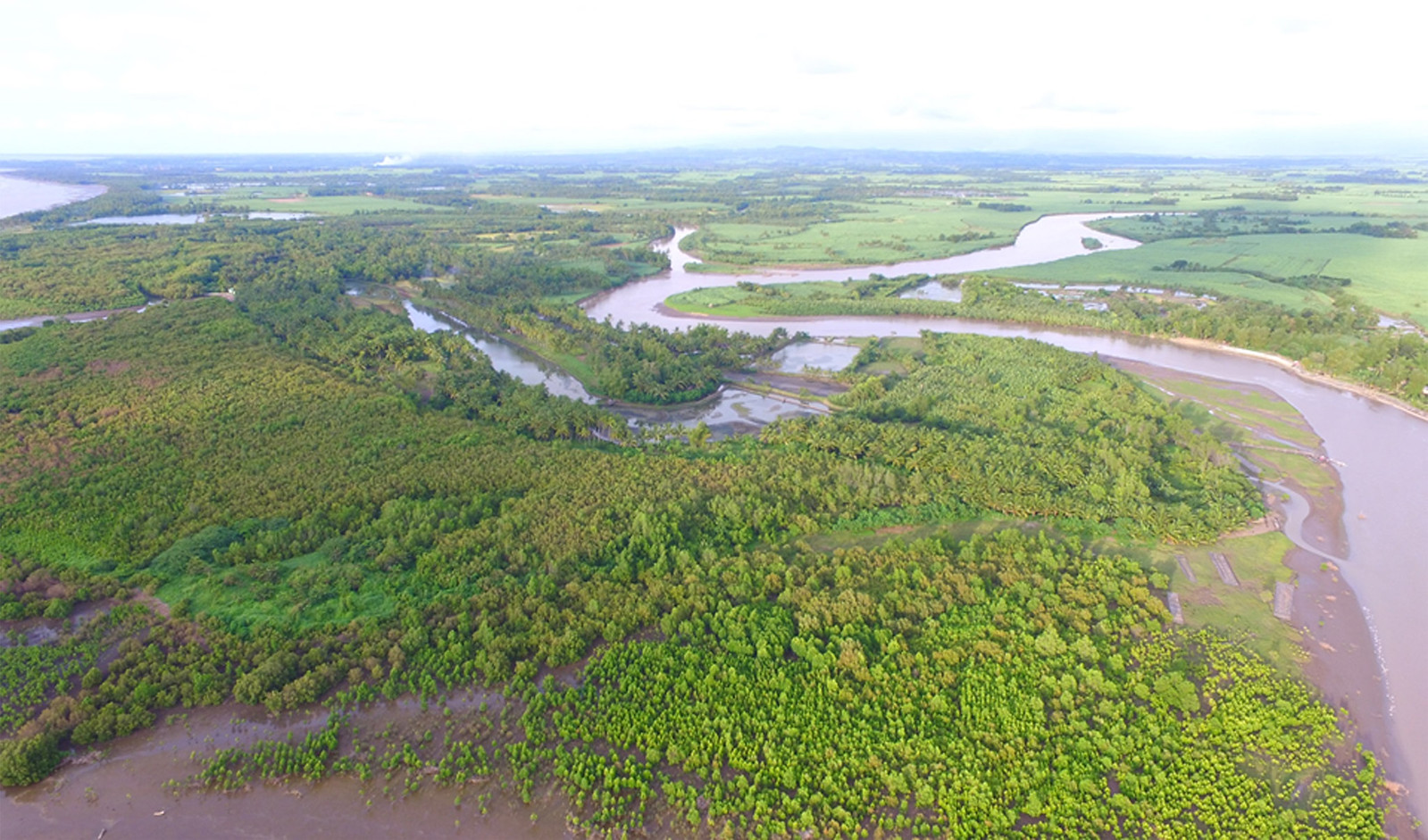
July 22, 2024 Monday

Mangroves provide a wide variety of services, not just to the environment, but also to people. Their submerged roots serve as a haven for a plethora of marine animals. Likewise, their trunks, leaves, and branches provide a home for tree-dwelling mammals, reptiles, amphibians, and birds. Furthermore, the closely knit roots of mangroves prevent coastal soil erosion just as their branches and leaves form a natural wind-barrier that protects coastal communities from strong gusts of winds, especially during storms.
Apart from their capacity as natural barriers and biodiversity hubs, the most impeccable feature of mangroves is their ability to capture and store carbon. Like most plants, mangroves capture carbon from the atmosphere. What makes them special, however, is the fact that the sediments where they are usually located also have the capacity to act as carbon sinks. This makes mangroves effective in carbon sequestration, making them highly valuable assets in climate change mitigation.
In the Philippines, mangroves are recognized as highly protected nature-based solutions to climate change. This prompted the development of several mechanisms aimed at the protection, preservation, and rehabilitation of Philippine mangrove systems, which includes legislations and key documents. Initial statistics estimate that the Philippines had 450,000 hectares of mangrove forests in 1920. By 1990, this decreased to 317,500 hectares and in most recent statistics it decreased further to 311,400 hectares.
Despite the significant reduction of mangrove forest coverage over the past century, the Philippines remains home to numerous mangroves sites. Various areas across the country have become focal points for ongoing efforts to protect, preserve, and rehabilitate these vital ecosystems. Here are some of the key mangrove sites in the Philippines:
.png)
Courtesy of Protected Areas, Wildlife Conservation Zone and Management Services Pampanga / Sasmuan Pampanga Coastal Wetland's Facebook Page
Listed as one of the eight Ramsar sites in the Philippines, Sasmuan Pampanga Coastal Wetlands is a hot spot for mangrove conservation. This 3,667-hectare mangrove and mudflats area is home to a bountiful number of animal species, including the Philippine duck that is endemic to the country, and serves as habitat for migratory birds.
.png)
Courtesy of Society for the Conservation of Philippine Wetlands
The Las Pinas-Paranaque Critical Habitat and Ecotourism Area, also known as the Las Pinas-Paranaque Wetland Center, is a 181.63-hectare Ramsar Site that houses several wetlands which include a mangrove forest. It is located southwest of Metro Manila and Manila Bay. The center is open to the public and offers activities that aim to educate visitors about the importance of wetlands through immersion.
.png)
Courtesy of Urban Nature Atlas
The Bakhawan Eco-Park is a 220-hectare mangrove forest in Kalibo, Aklan. This forest started as a reforestation project in 1990, which was jointly led by the local government of Aklan and the Kalibo Save the Mangroves Association. Today, the mangrove forest is recognized as one of the most successful reforestation projects in the country.
.png)
Courtesy of DENR-SCIS/East Asian-Australian Flyway
Located along the 110 kilometers of coastline of Negros, the Negors Occidental Coastal Wetlands are among the eight Ramsar protected sites in the Philippines. It is home to three globally threatened marine turtles such as the hawksbill turtle, green turtle, and olive ridley turtle. Furthermore, it serves as a preferred destination for water bird species. The area is composed of different wetlands, which includes a stretch of mangroves.
.png)
Courtesy of SeePangasinan
Pangasinan province boasts 469 hectares of mangrove areas across 13 of its coastal municipalities. It also hosts a mangrove nursery spanning over 8.17 hectares. These mangrove forests serve as a center of biodiversity in Pangasinan and provide livelihoods to many of its coastal communities.
.png)
Courtesy of love4aya/shutterstock
Identified as another Ramsar site in the Philippines, Olango Island Wildlife Sanctuary spans 1,030 hectares of sand flats and mangroves. Located on Olango’s southern shores, the sanctuary supports the largest concentration of migratory birds in the Philippines.
.png)
Courtesy of Klook
Another Philippine Ramsar site, Puerto Princesa Subterranean River Park connects a wide range of important ecosystems, including a limestone cave system, mangrove forests, lowland tropical forests, and freshwater swamps. The park is home to about 800 plant and animal species, making it a highly biodiverse area.
.png)
Courtesy of Radge Starr
Stretching to 425 hectares of mangrove forest, the Banacon Island Mangrove Forest is an eco-tourist destination established through community efforts in 1957. It is located in northern Bohol province. The vast expanse of mangroves on the island provides a home to plenty of sea and tree dwelling animals. It is open to the public and can be toured via boats.
These sites represent a fraction of the rich mangrove ecosystems found throughout the Philippines, each contributing uniquely to the nation's ecological and socio-economic well-being.They all play a crucial role in coastal protection, biodiversity conservation, and carbon sequestration. This underscores the need for more robust initiatives and efforts from various stakeholders, including the government, local communities, non-governmental organizations, and the private sector, to ensure the sustainable management and rehabilitation of the country's mangrove ecosystems.